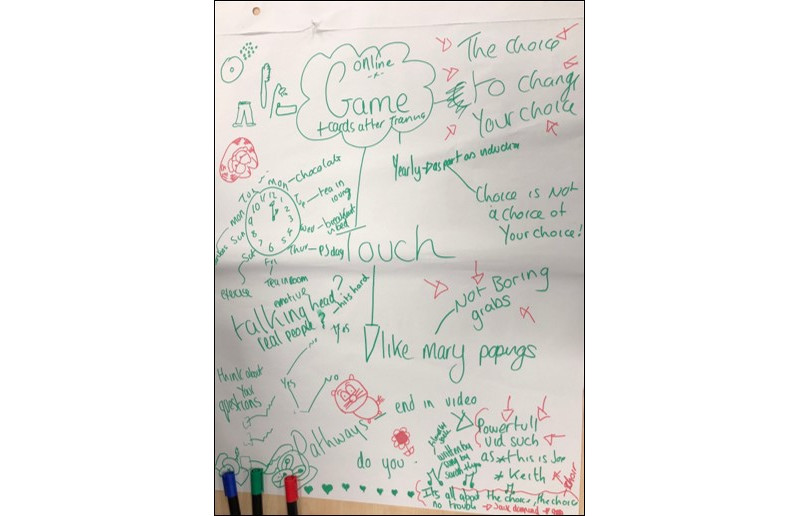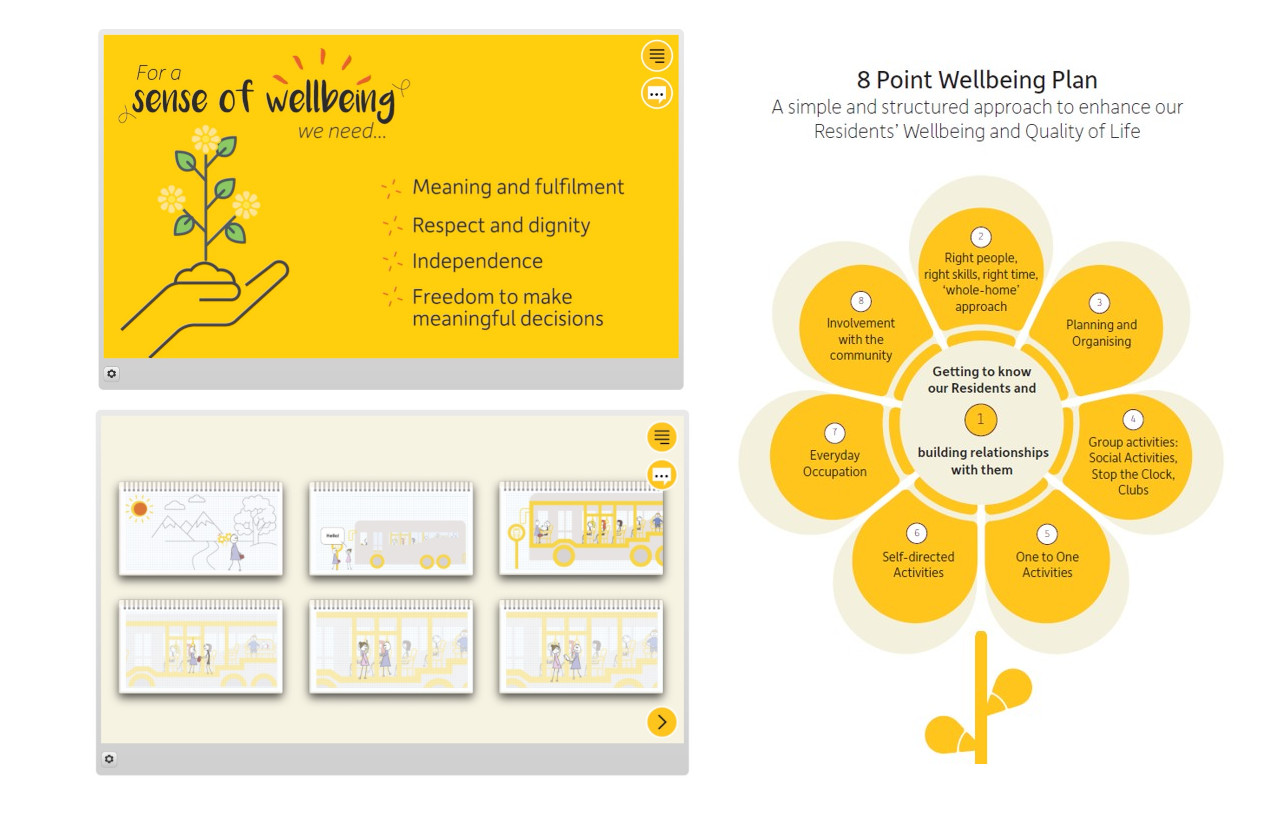Promoting actions for wellbeing in care homes

All About That Choice
This memorable, fun and impactful animated song was the centrepiece of a wellbeing campaign. It helped HC-One's care home colleagues to promote improved quality of life for residents.
Below is the story of how a co-creation workshop helped pinpoint actions that would make the most difference, and bring them to life in the campaign...
Improving quality of life: From big strategy to practical action
The everyday experiences of care home residents are crucial for their happiness, quality of life and wellbeing. Many of those experiences are made up of the small interactions that residents share with the staff who care for them.
HC-One’s mission is to provide “the kindest care”. As the UK’s largest care home operator, HC-One has over 22,000 staff, and is committed to supporting quality of life for residents across its hundreds of care homes. The focus on quality of life is also of strategic importance as a key measure for home inspections by the Care Quality Commission (independent regulator of health and social care in England).
But how should the aspirational strategy to ‘improve quality of life’ best be made real through the practical actions that care home colleagues are asked to take in their daily work? And how can those practical actions be effectively communicated and embedded across the distributed workforce?
The value of co-creating of a memorable campaign
HC-One asked us to help them identify how to influence positive actions and engage their colleagues.
Working with HC-One’s Director of People and Engagement, we designed an Acteon Lab workshop which would bring together different stakeholders, including managers and front-line staff who could provide vital insights into everyday challenges and opportunities in care homes.
The workshop had three key aims:
- Identify and prioritise the ‘moments that matter’ – the interactions between care home colleagues and residents that are important for promoting quality of life.
- Understand what happens in those moments and identify the positive actions a colleague can use.
- Design interventions and a campaign to help colleagues use those actions.
Getting specific about practical actions
What kind of specific actions do we mean? Well, for example, we needed to translate the general idea that a resident wants to have friendly people to look after them, into exactly how a colleague can greet a resident when they first go into their room in the morning.
Or translate the general idea of helping residents feel they have some independence, into the action for a colleague to give the resident the chance to choose what clothes they would like to wear that day.
Collaborative workshop
We used a Design Thinking approach for the workshop. This helped us to tap into experiences and work-based insights, as well as opening up creative thinking and problem solving among participants.
Key elements of the day included:
1. Empathise: Identifying moments that matter
We asked participants to map out day-in-the-life journeys of care home colleagues. From this, we identified specific ‘moments’ and exactly what people could do or say in those moments to promote wellbeing of residents.
We then grouped those actions, and worked together to prioritise how much difference each could make to the objective of improving quality of life. The group identified 5 key awareness and action points which underpin most of those everyday interactions:
- See the person.
- Know their story.
- Empathise in the moment.
- Support meaningful choice.
- Think differently.
2. Define: How do we close the gap?
Using the five target actions listed above, we defined the gap between where things are now and where you want them to be.
Which actions don’t yet happen at all, or happen in some places but not others? Which actions need to happen more frequently? And which actions may be new, and so colleagues may need some training?
The gaps identified defined the changes needed in awareness, attitude and behaviour.
This gave us specific ‘how might we’ questions for ideation, such as
‘How might we help colleagues understand what choice is?’ and ‘How might we encourage colleagues to ask themselves “how would I feel”?’
3. Ideate: Addressing the “how might we…” questions
The group generated creative ideas in response to the “How might we…” questions. Ideas were sorted into How/Now/Wow categories based on originality and ease of implementation.
For example, for the question ‘How might we help colleagues and residents get to know each other?’, we brainstormed to come up with several suggestions.

Using ‘dot voting’, we prioritised three ideas to take forward for prototyping.
4. Prototype: How could we create it?
Prototyping involved developing our three priority ideas into potential outputs we could create and implement.
This was a fun process of generating and co-creating, encouraging lots of ideas to be added to flipcharts and shared. One of these ideas developed into an interactive game called ‘All about the choice’, which reinforces the importance of giving meaningful choice to residents.

Campaign
We created an impactful campaign using the ideas generated from the workshop, and based on three key ‘moments that matter’:
- ‘How are you today?’ – ask, listen, and respond.
- ‘A walk in their shoes’ – empathise.
- ‘All about that choice’ – promote and support choice wherever possible.
The ‘All About That Choice’ song featured at the top of this case study was the central creative feature of the campaign, and highly memorable!
We created a core e-learning module called ‘A guide to wellbeing’, and short animations to support each of the campaign strands.

Acteon’s Owen Rose reflects:
“It’s fascinating to help practitioners dissect what they do – working with them to translate generalised ideas such as ‘it’s vital to empathise’ into what that looks like as specific actions that people can take. Having different people together in the workshop meant we could really unpick that together.”
